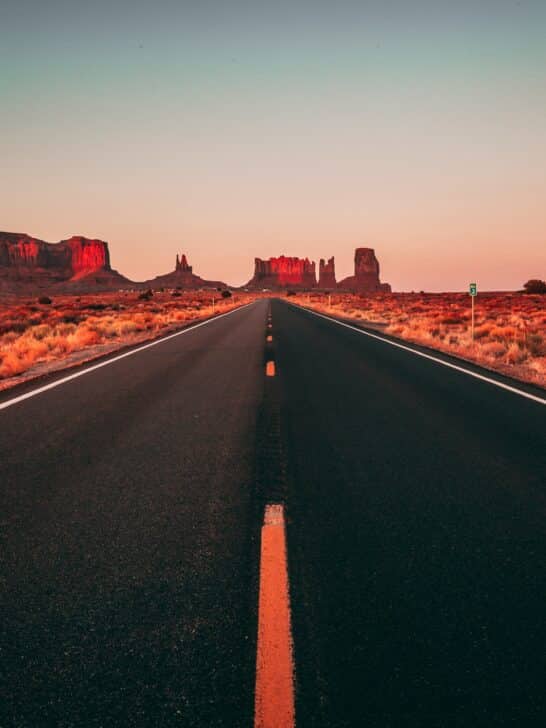National Parks in Arizona: Discover the Wonders
Arizona, a state in the southwestern United States, is a treasure trove of natural beauty and ancient history. It is home to many National Parks and Monuments. Each offers a unique blend of stunning scenery, diverse wildlife and rich cultural heritage. From the awe-inspiring Grand Canyon to the ancient cliff dwellings of Montezuma Castle, Arizona’s national parks offer a wealth of opportunities for exploration, adventure and learning. These parks and monuments not only preserve nature, but also protect the state’s historic and cultural sites, providing a window into the past. They are home to ancient Native American ruins, historic battlefields and remnants of early pioneer life. Whether you’re a history buff, nature lover or adventure seeker, National Parks in Arizona have something for you.
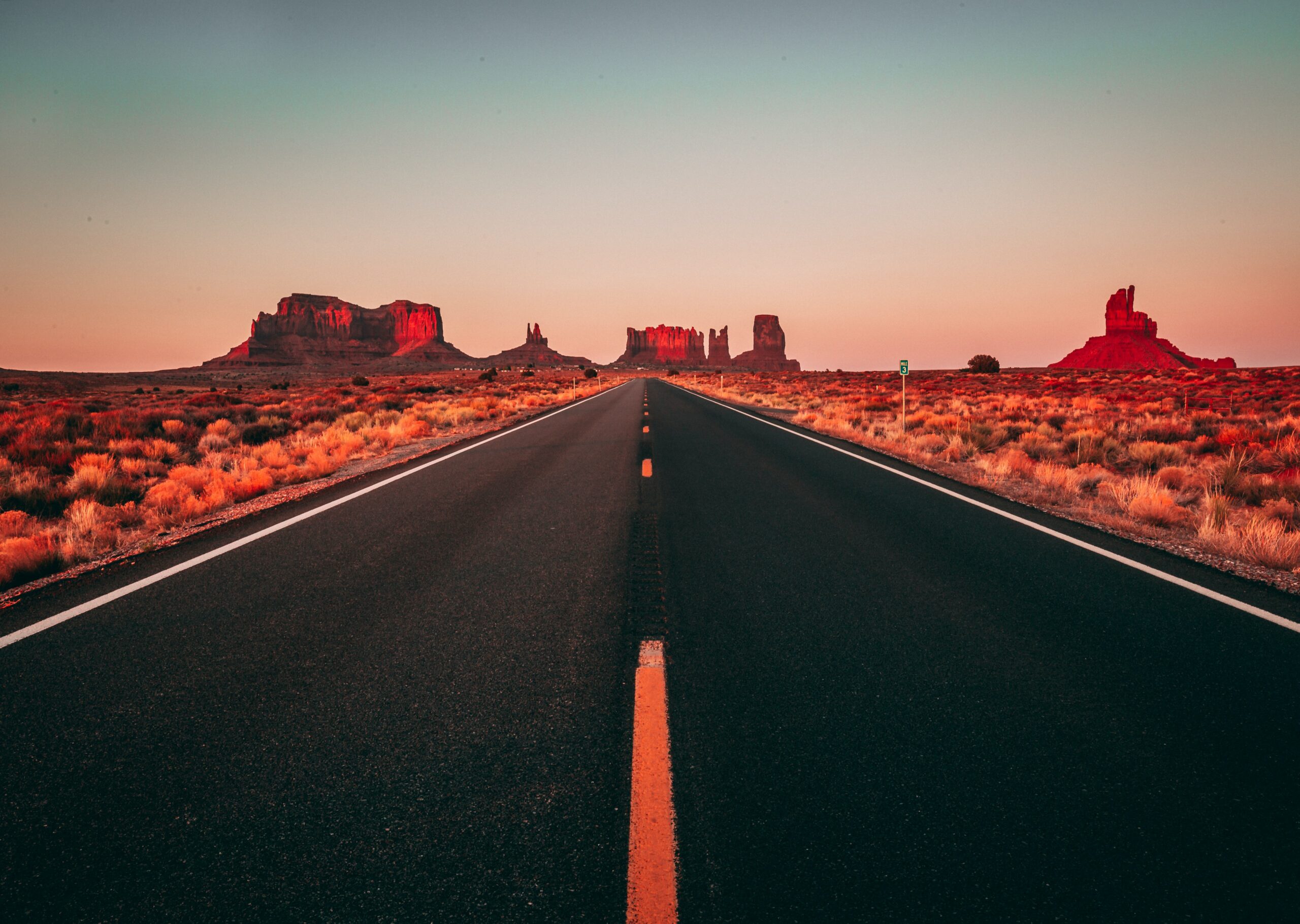
The Top National Parks in Arizona, US
1. The Grandeur of the Grand Canyon National Park
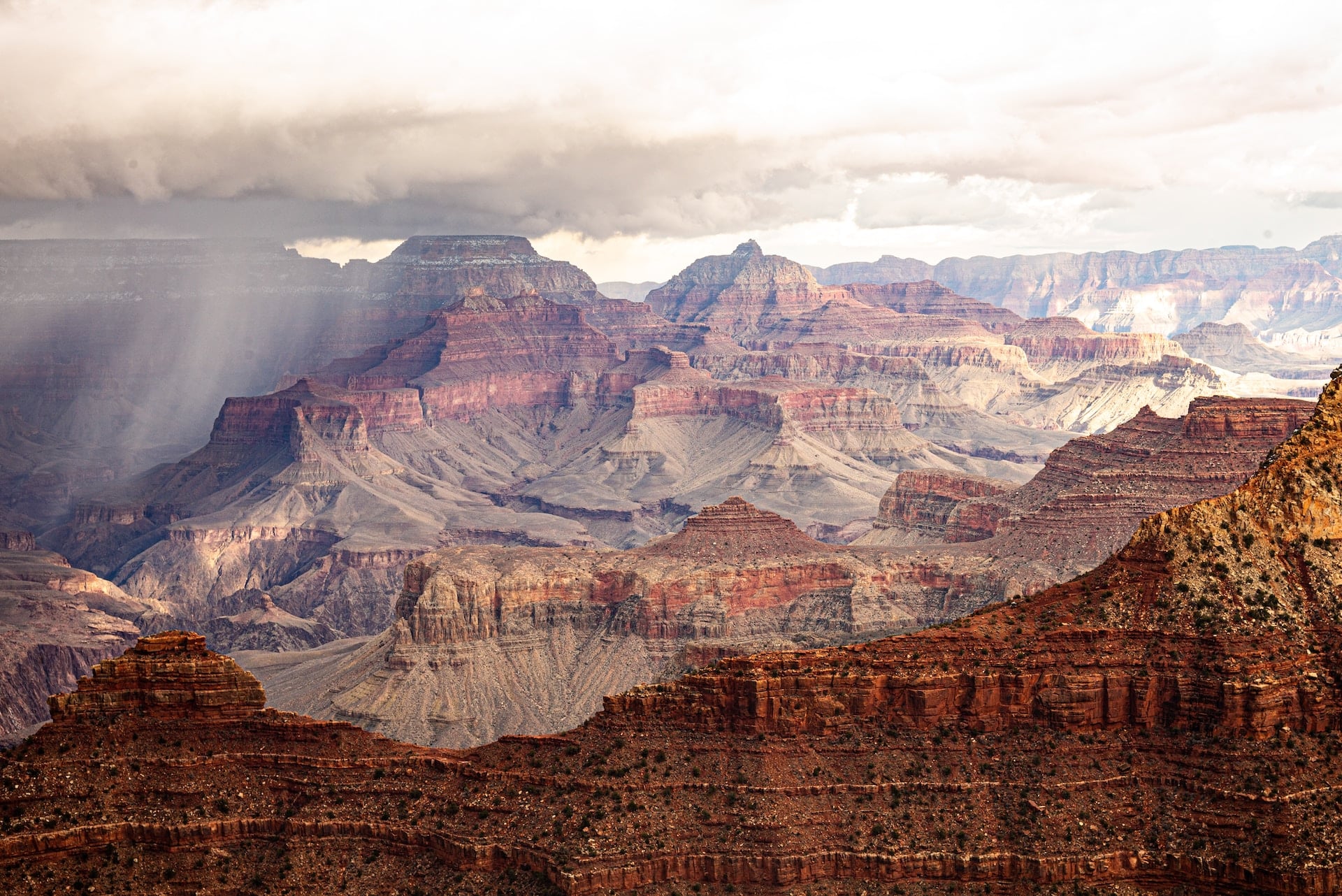
The Grand Canyon National Park, a UNESCO World Heritage site, is undoubtedly the crown jewel of Arizona’s national parks. This colossal canyon, carved by the Colorado River, is renowned for its layered bands of red rock revealing millions of years of geological history. The park is divided into the South, North and West Rim, each offering unique perspectives of the canyon. The South Rim is the most visited due to its accessibility and the variety of services available.
Why should you visit?
The Grand Canyon National Park is a must-visit for its awe-inspiring views and the unique experience it offers. The park is home to the Grand Canyon, a mile-deep gorge carved by the Colorado River. It is known for its layered bands of red rock and its vast scale. The park’s immense size and variety of habitats are home to over 500 animal species. Definitely one of Arizona’s top national parks, probably in the top 3.

Park Entrance Informations
The entrance fee is $35 per vehicle (could be change in the future)! But it’s advisable to purchase your pass online in advance to avoid long queues. The entrance fee can be paid digitally before arrival.
Getting there is quite straightforward. The Grand Canyon is well connected by roads and has an airport. The nearest major airports are in Las Vegas and Phoenix. From there, you can rent a car or take a shuttle service. The South Rim of the park is open 24 hours, 365 days a year, and most services are available year-round.
2. The Petrified Forest National Park: A Walk Through Time
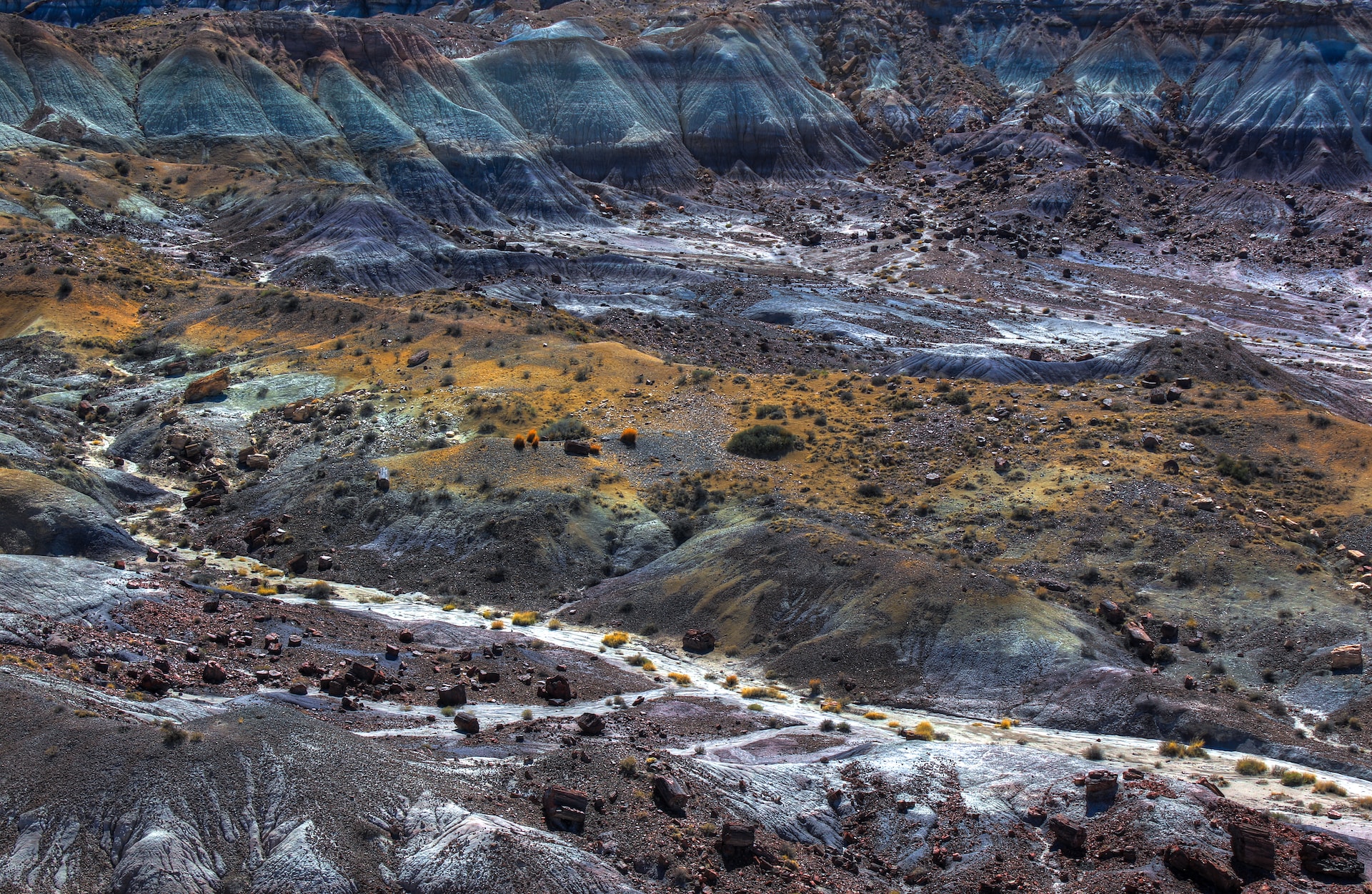
The Petrified Forest National Park offers a glimpse into the prehistoric world with its vast landscapes filled with colorful petrified wood. The park is also home to the Painted Desert. It is a stunning expanse of badland hills and buttes filled with a myriad of colors.
Why should you visit?
The Park is a fascinating place where you can walk among ancient fossilized trees that have turned to colorful stone. The park is also home to significant deposits of Late Triassic fossils, making it a major scientific resource for paleontologists. The park has several short trails. These include the Painted Desert Rim Trail and the Giant Log Trail. They offer breathtaking views of the vibrant desert landscape.
Park Entrance Informations
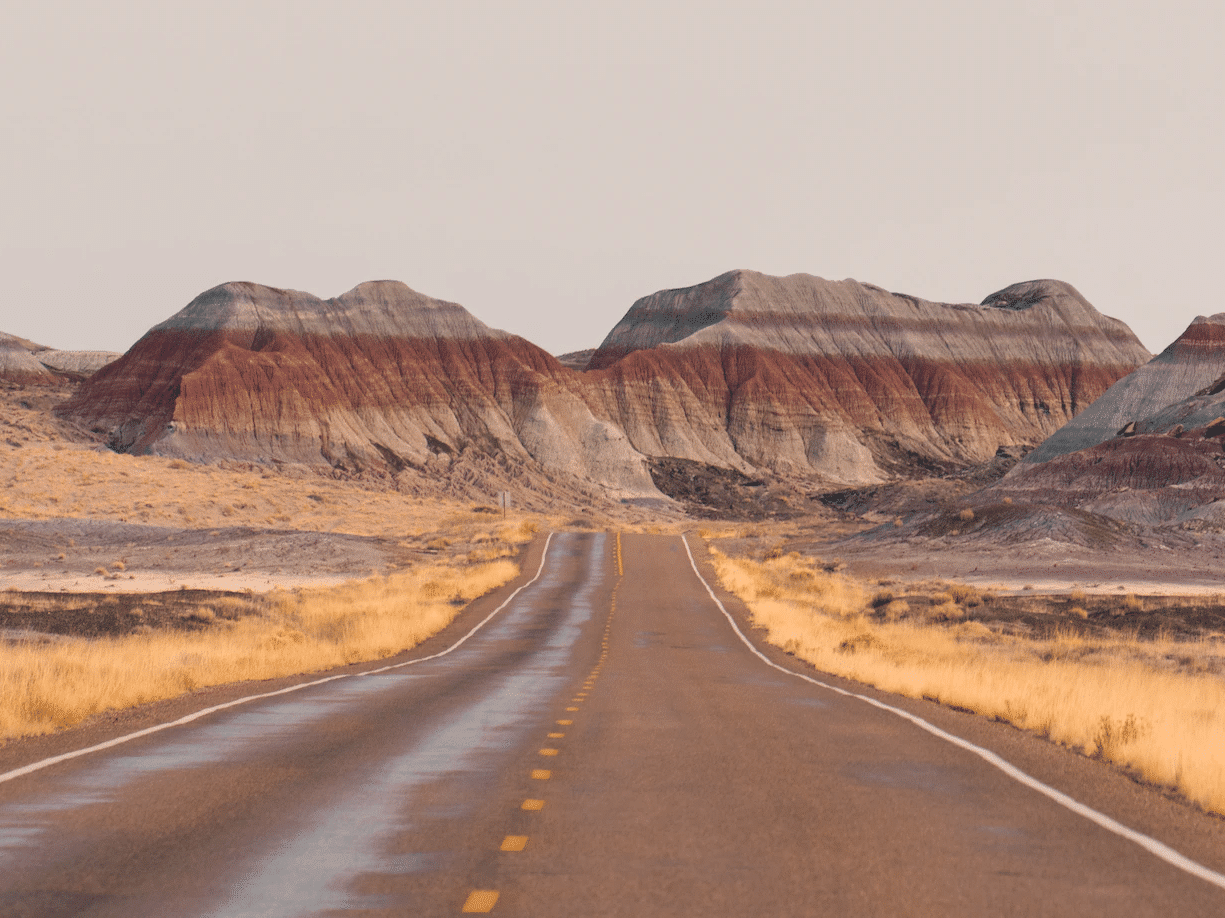
The entrance fee is $25 per vehicle (the fee can be paid with a debit or credit card upon arrival). The park is open year-round except for Thanksgiving and Christmas. The park hours are 8am to 5pm. Please check pricing and opening informations before on the specific homapage. The values can be change in the future.
The park is located in northeastern Arizona, about 50 miles from the New Mexico border. The nearest airports are in Flagstaff, Arizona, and Albuquerque, New Mexico. From these cities, it’s a drive of 2-3 hours to the park.
3. Saguaro National Park: The Land of Giants
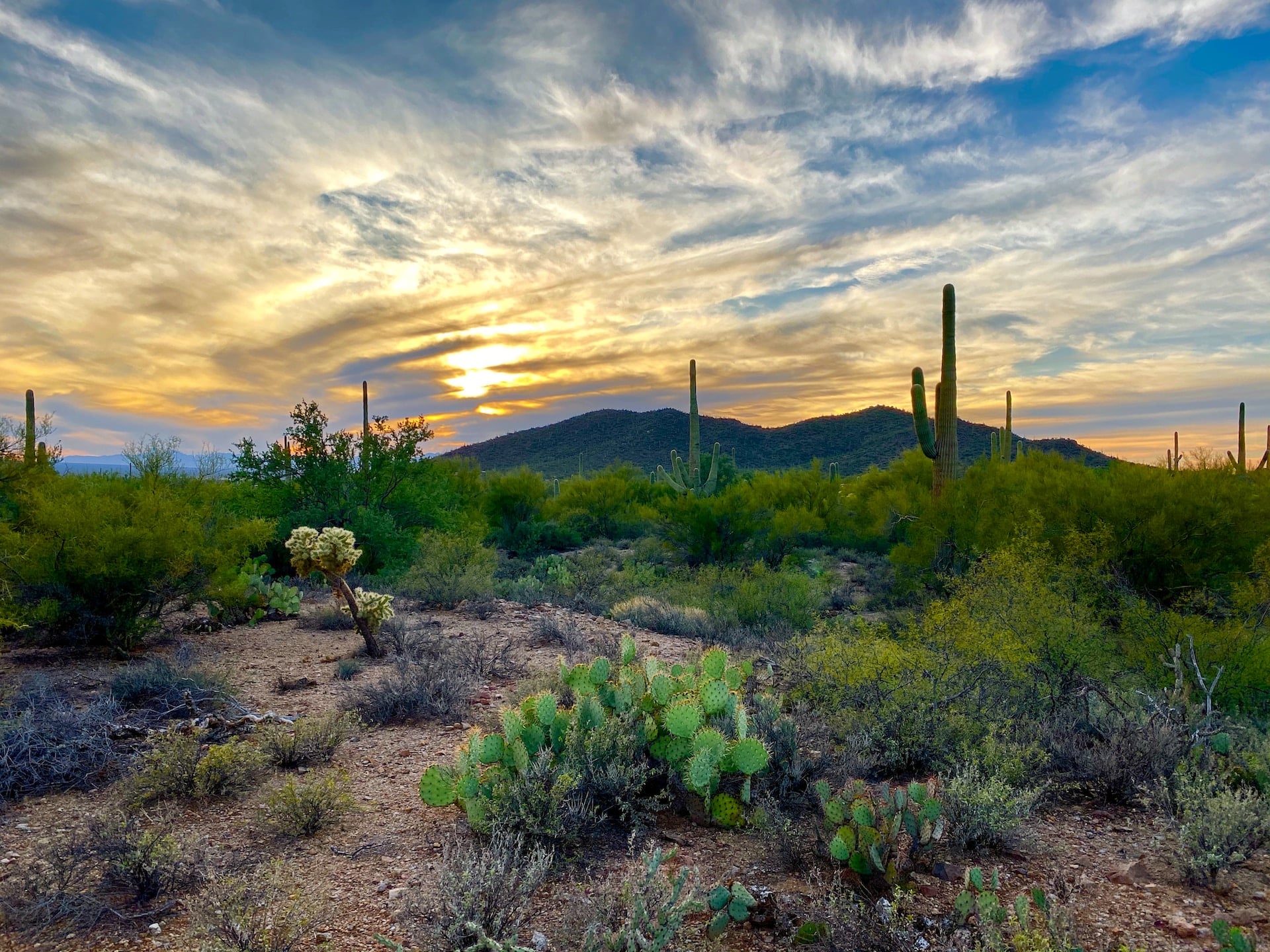
In southern Arizona, Saguaro National Park is located on the outskirts of Tucson. It is a testament to the resilience and beauty of desert life. The park is named after the Saguaro cactus. It comes from the largest cactus in the United States and is a symbol of the American West. These towering plants can live up to 200 years and reach 50 feet in height. They are a sight to behold, especially when they bloom in late spring.
Why should you visit?
Saguaro National Park is native to its desert environment and is divided into two sections, east and west of Tucson. Here you can see these giant cacti silhouetted against the beauty of a magnificent desert sunset. The park offers a variety of ways to explore the desert, from scenic drives to hiking and biking trails. The two districts of the park, the Tucson Mountain District and the Rincon Mountain District, offer different experiences and landscapes, making it worthwhile to visit both.

Park Entrance Informations
The park is always open, and you can walk or bike into the park 24 hours a day. The entrance fee can be paid digitally before arrival. The park is located in southeastern Arizona, near the city of Tucson. Tucson has an international airport, and the park is just a short drive from the city.
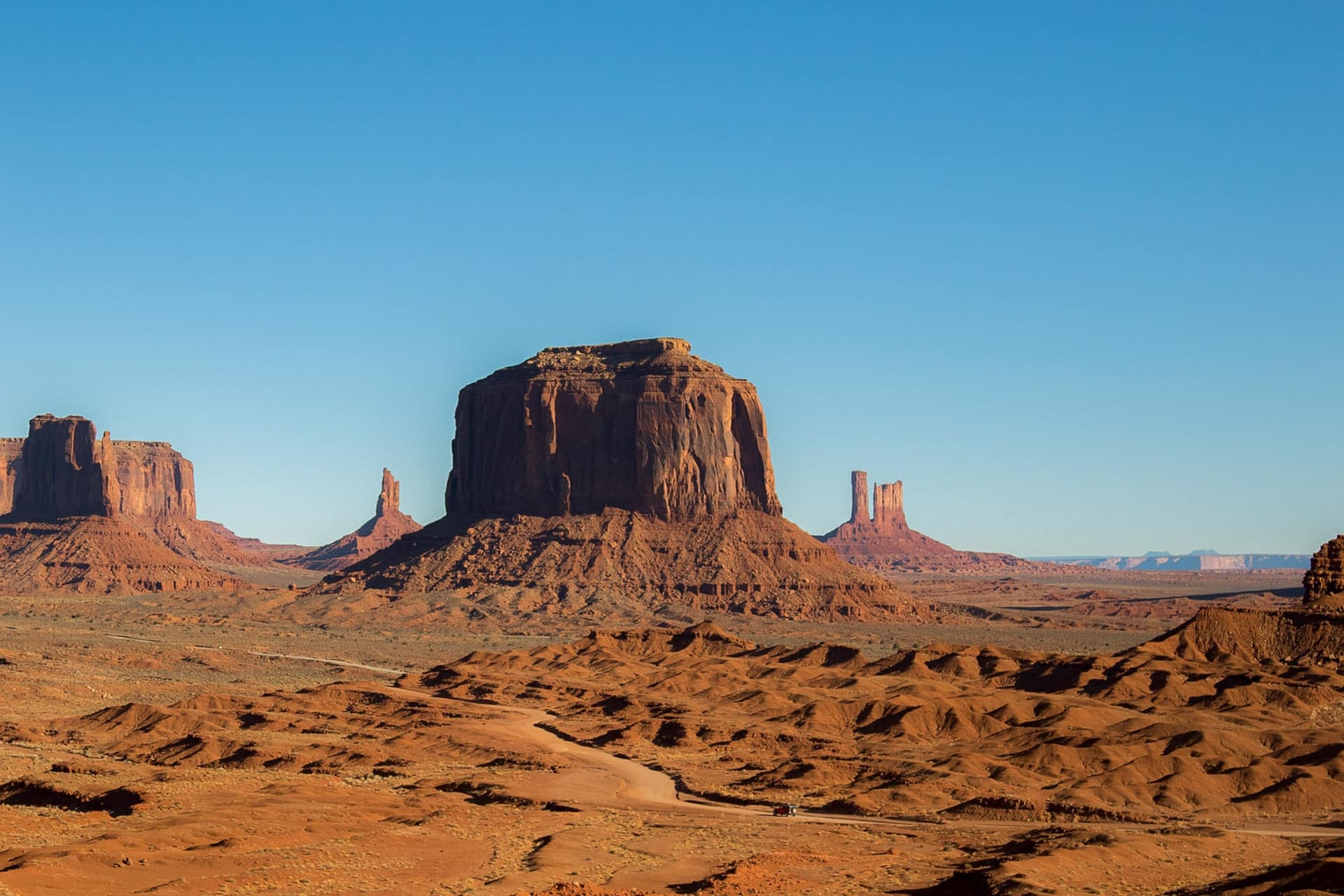
The Monument Valley Navajo Tribal Park, although primarily located in Utah, extends into Arizona and offers some of the most iconic landscapes of the American West. Known for its towering sandstone buttes, the park has been the backdrop for numerous Western films. The Navajo Nation manages the park and provides guided tours. These tours give insight into the Navajo people’s rich history and culture.
Why should you visit?
Visitors to the park can take guided tours, go horseback riding, or simply drive through the park to take in the breathtaking views. The park is also home to the Navajo Nation, and visitors can learn about Navajo culture and history during their visit. The park’s Visitor Center offers a variety of educational exhibits and programs, and there are also several hiking trails for those who want to explore the park on foot.
Park Entrance Informations

The park is located on the Arizona-Utah state line near the Four Corners area. The nearest major airport is in Flagstaff, Arizona, about 175 miles to the west. From there, you can rent a car to reach the park. The park is open year-round, and the entrance fee can be paid upon arrival.
5. Glen Canyon National Recreation Area: A Haven for Outdoor Enthusiasts
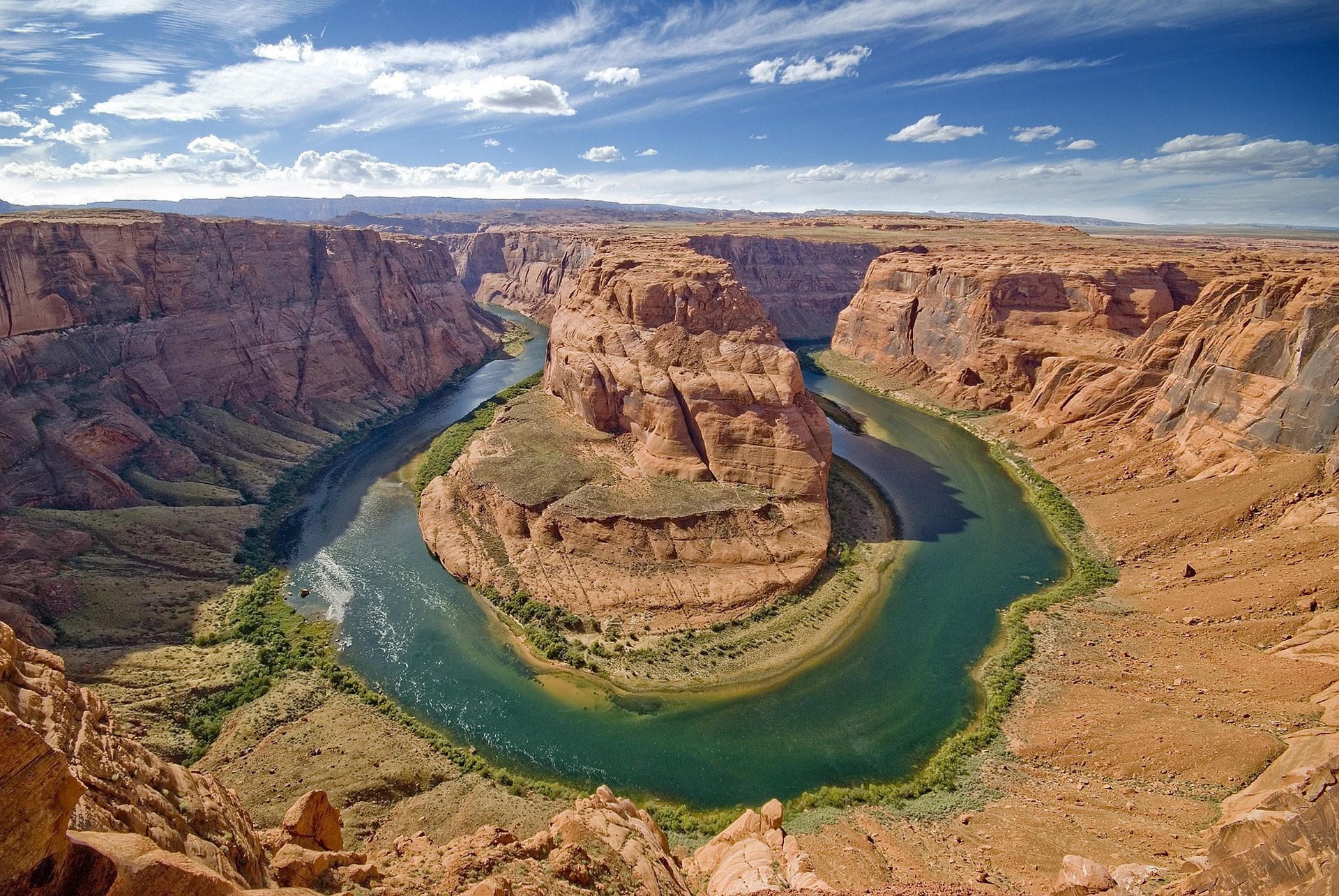
The Glen Canyon National Recreation Area is a sprawling reserve offering a plethora of outdoor activities. From boating on the emerald waters of Lake Powell to hiking through the beautifully sculpted canyons, this park caters to all types of adventurers. The park also offers wild camping sites for those wishing to extend their stay.
Why should you visit?
The park is definitely one of the top national parks in Arizona. Glen Canyon National Recreation Area offers unparalleled opportunities for water-based & backcountry recreation. The recreation area stretches for hundreds of miles from Lees Ferry in Arizona to the Orange Cliffs of southern Utah, encompassing scenic vistas, geologic wonders, and a panorama of human history.
Park Entrance Informations

The park is open 24 hours a day, year-round. The entrance fee can be paid digitally before arrival. The recreation area is in northern Arizona and extends into southern Utah. It’s about a four-hour drive north from Phoenix or south from Salt Lake City.
6. Organ Pipe Cactus National Monument: A Desert Oasis
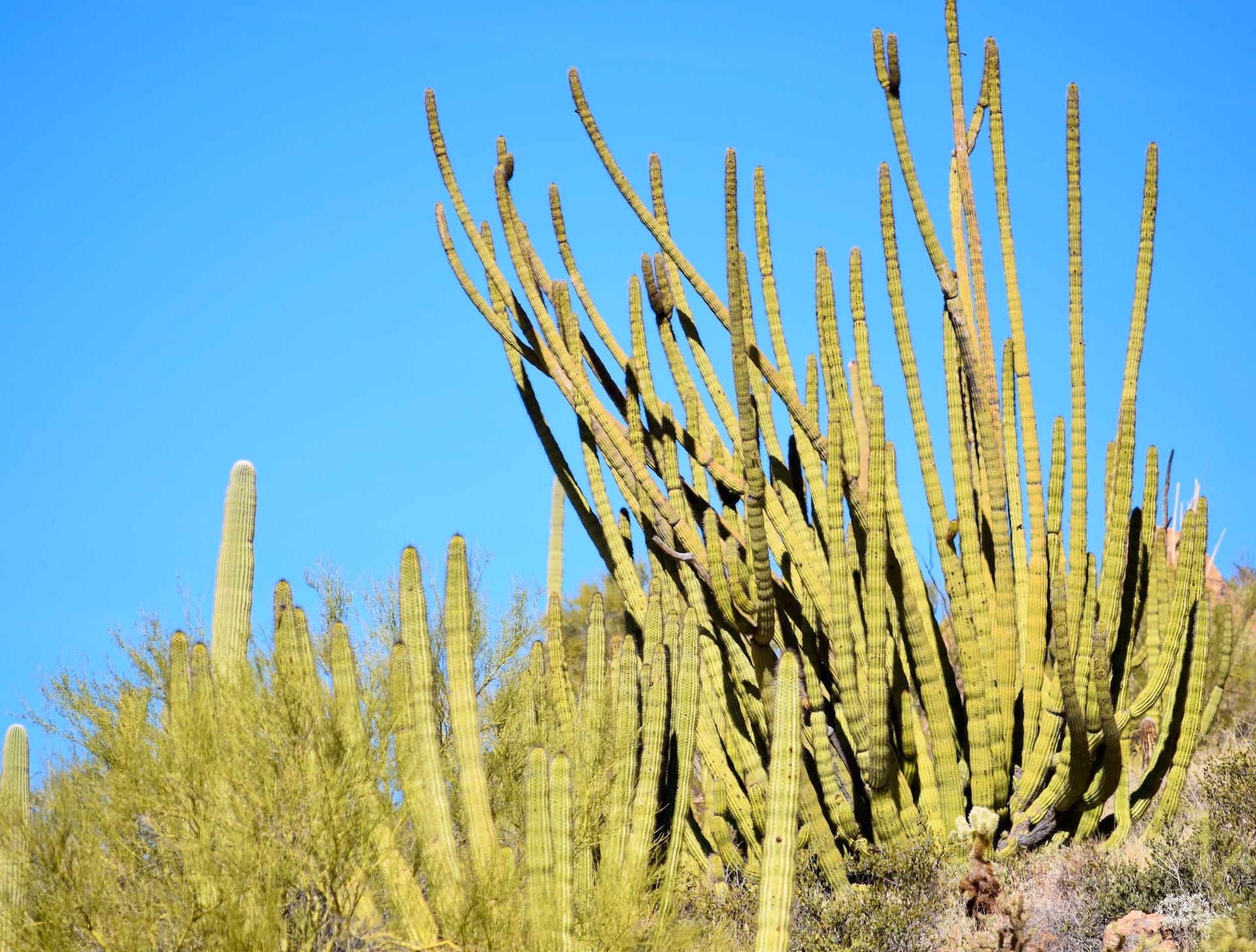
Organ Pipe Cactus National Monument is a place where life thrives against all odds. This International Biosphere Reserve is home to a wide variety of plants and animals. They have adapted to survive in the harsh desert environment. The organ pipe cactus, from which the park gets its name, is a rare species exclusive to this region.
Why should you visit?
Organ Pipe Cactus National Monument celebrates the life and landscape of the Sonoran Desert. This is a showcase for creatures who have adapted themselves to the extreme temperatures, intense sunlight, and little rainfall that characterize this Southwest region.
Visitors can explore the park on a scenic drive, take a hike on one of the park’s trails, or camp under the stars in one of the park’s campgrounds. The park also offers a variety of ranger-led programs, providing visitors with the opportunity to learn more about the desert ecosystem.
Park Entrance Informations

The park is open year-round, 24 hours a day. There is no entrance fee for the park. How to get there: The monument is located in southern Arizona, bordering Mexico. The nearest major airport is in Tucson, about two hours to the north.
7. Canyon de Chelly National Monument: A Window into the Past
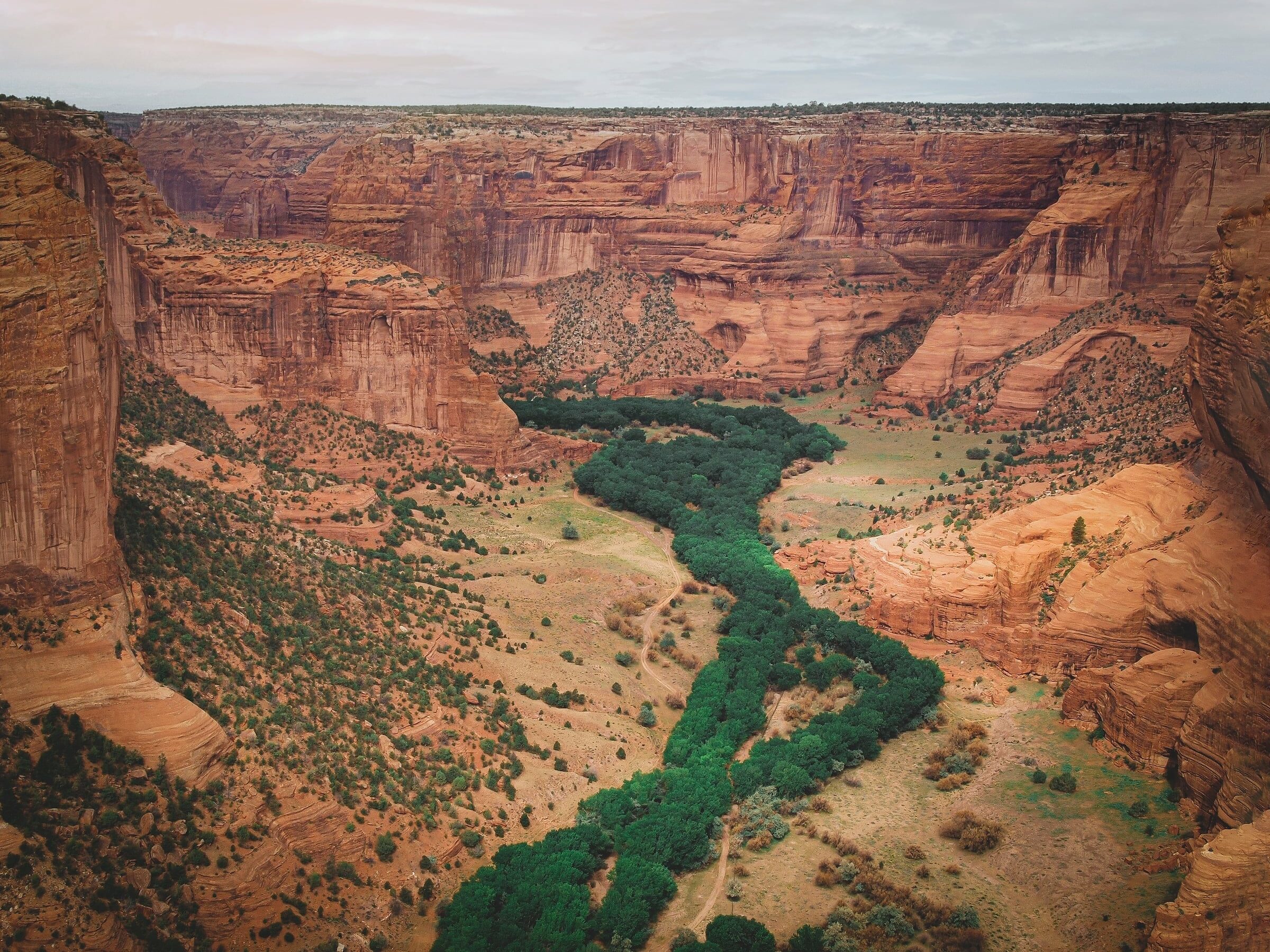
Canyon de Chelly National Monument offers a unique glimpse into the ancient and modern cultures of the Navajo Nation. For nearly 5,000 years, people have lived in these canyons, making it one of the longest continuously inhabited landscapes in North America. Today, the park is a place where the past and the present come together, with ancient ruins standing alongside modern Navajo homes and farms.
Why should you visit?
Canyon de Chelly National Monument offers the opportunity to learn about Southwestern Indian history from the earliest Anasazi to the Navajo Indians who live and farm here today. Its prominent features include Spider Rock spire, about 800-feet tall, and towering sandstone cliffs surrounding a verdant canyon.
Visitors can explore the park on their own or take a guided tour with a Navajo guide. The park’s two main canyons, Canyon de Chelly and Canyon del Muerto, offer a variety of hiking trails and scenic overlooks. The White House Ruin Trail, one of the most popular hikes in the park, leads to a stunning ancient pueblo built into a sheer cliff face.

Park Entrance Informations
The park is open year-round, 24 hours a day. There is no entrance fee for the park. The monument is located in northeastern Arizona within the boundaries of the Navajo Nation. The nearest airports are in Phoenix and Albuquerque, each about a four-hour drive away.
Reservations and Other Information
Parks like the Grand Canyon National Park can become very crowded, especially in peak seasons. You should visit the park’s official website to find information on reservations and visitor guidelines. Make sure to follow the park’s rules and regulations to preserve these natural wonders for future generations.
More National Parks in Arizona

Here are some more national parks and attractions in Arizona:
- Chiricahua National Monument: It is known as a “Wonderland of Rocks“. This monument is home to extensive vertical rock formations and a diverse range of plant and animal life.
- Montezuma Castle National Monument: This well-preserved cliff dwelling was built by the Sinagua people. It offers a glimpse into the rich history of Aboriginal cultures in the South West.
- Tonto National Monument: This monument protects two cliff dwellings of the Salado culture that date back to the 13th, 14th and early 15th centuries.
- Navajo National Monument Navajo National Monument preserves three of the most intact cliff dwellings of the ancestral puebloan people. The monument is high on the Shonto plateau, overlooking the Tsegi Canyon system, in the Navajo Nation in northern Arizona.
- Tumacacori National Historical Park Tumacacori National Historical Park protects the ruins of three Spanish mission communities. Visitors can see the remains of the mission church and convento, visit the museum, walk the mission garden, and hike to the Santa Cruz River.
- Sunset Crater Volcano National Monument: The monument gets its name from the volcano that erupted in 1085, transforming the landscape dramatically and impacting the inhabitants.
- Walnut Canyon National Monument: This monument allows you to walk in the footsteps of the people that lived here over 900 years ago. Experience life along the rim in a pinyon-juniper forest, or imagine the past by peering into the cliff dwellings.
- Wupatki National Monument: Home to numerous ruins, including a four-story structure with over 100 rooms, this monument offers a look into the lives of the Ancient Pueblo people.
- Parashant National Monument: This remote monument offers a wealth of wilderness, wildlife, and history, including pristine night skies, canyons, mountains, and buttes.
- Agua Fria National Monument: This monument protects over 450 distinct Native American structures, including large pueblos and smaller habitations, spread out over 71,000 acres.
- Ironwood Forest National Monument: Named for one of the longest-living trees in the Arizona desert, this monument is home to a significant concentration of ironwood trees, as well as numerous rare and endangered species.
- Vermilion Cliffs National Monument: This remote and unspoiled monument offers opportunities for hiking, wildlife viewing, and photography, with its spectacular red cliffs and canyons.
- Casa Grande Ruins National Monument Casa Grande Ruins National Monument protects an ancient Hohokam farming community and “Great House.” Created as the nation’s first archaeological reserve in 1892, the site was declared a National Monument in 1918. The monument offers a captivating look into the sophisticated irrigation systems of the Hohokam people and their impressive four-story “Great House”.
- Coronado National Memorial Located in the southeastern-most part of Arizona, Coronado National Memorial commemorates the first organized expedition into the Southwest by conquistador Francisco Vásquez de Coronado. The memorial offers stunning views, fantastic hiking opportunities, and a unique blend of cultural and natural history.
- Fort Bowie National Historic Site Fort Bowie National Historic Site commemorates the bitter conflict between Chiricahua Apaches and the U.S. military. A visit to Fort Bowie allows you to explore the remnants of the fort, the Apache Spring, the post cemetery, and various other historic sites, while enjoying the natural beauty of the surroundings.
- Hohokam Pima National Monument Hohokam Pima National Monument is an ancient Hohokam village within the Gila River Indian Community. Not open to the public, but the nearby Casa Grande Ruins National Monument offers a glimpse into the Hohokam culture.
- Hubbell Trading Post National Historic Site Hubbell Trading Post National Historic Site offers you a chance to become a part of its vibrant history. As the oldest operating trading post on the Navajo Nation, it offers a selection of handcrafted Navajo rugs, jewelry, and baskets, as well as a variety of other Native American art.
Some of these lands might not be official National Parks. However, federal management oversees them, providing similar opportunities for recreation and exploration.
How many national parks are in Arizona?
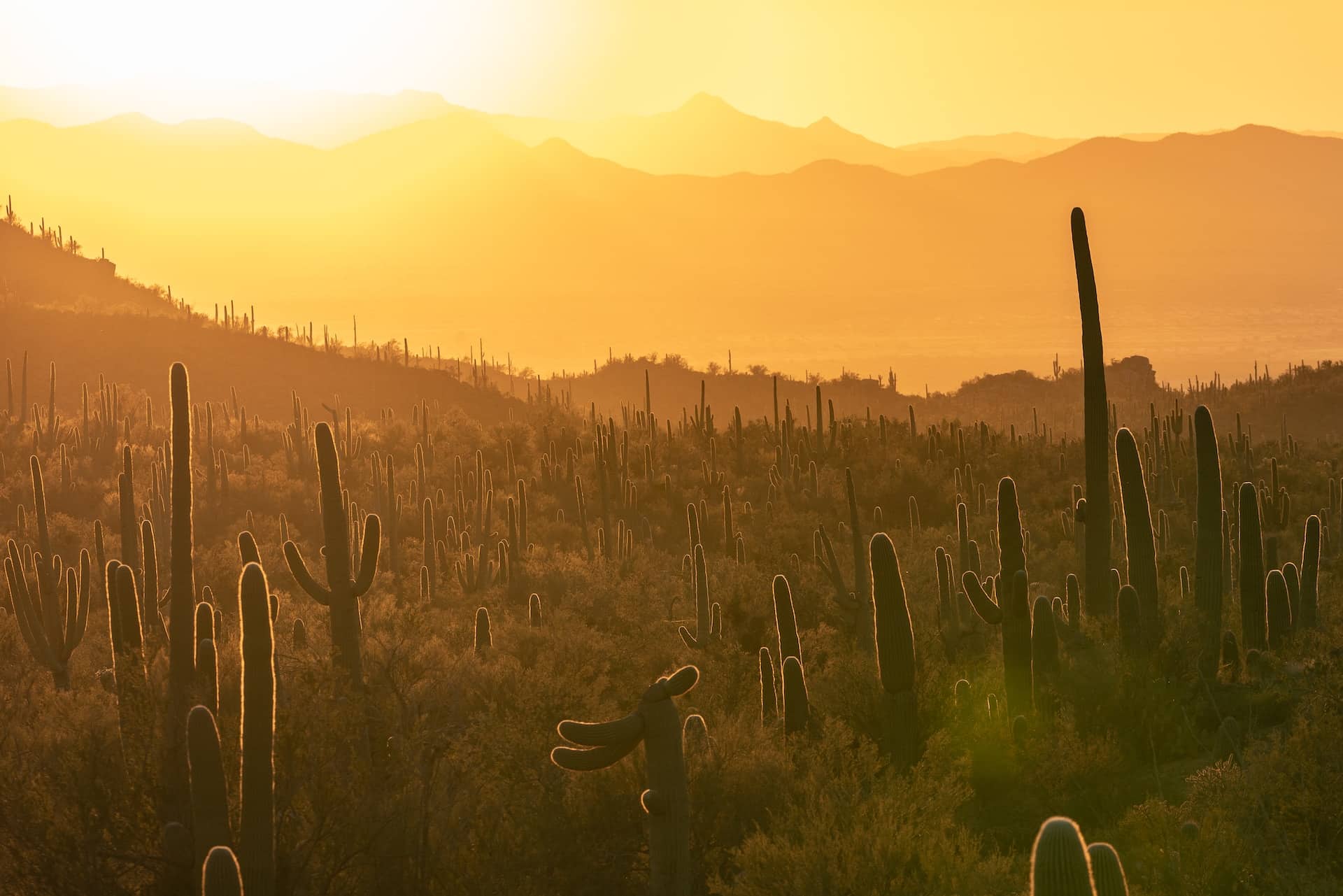
Arizona is home to a rich tapestry of national parks, monuments and historic sites. The National Park Service officially designates three locations in Arizona as “National Parks”: Grand Canyon National Park, Petrified Forest National Park and Saguaro National Park.
These parks are part of a larger network of 22 sites managed by the National Park Service in Arizona, which also includes national monuments, national memorials, national historic sites and more. Each of these sites contributes to the cultural history and natural resources of the state. They all offer unique experiences for visitors.
While there are only three official ‘national parks’ in Arizona, the state has a wealth of national monuments, historic sites and other protected areas. This makes it a premier destination for those seeking to explore America’s natural and cultural heritage.
The Most Beautiful Park in Arizona
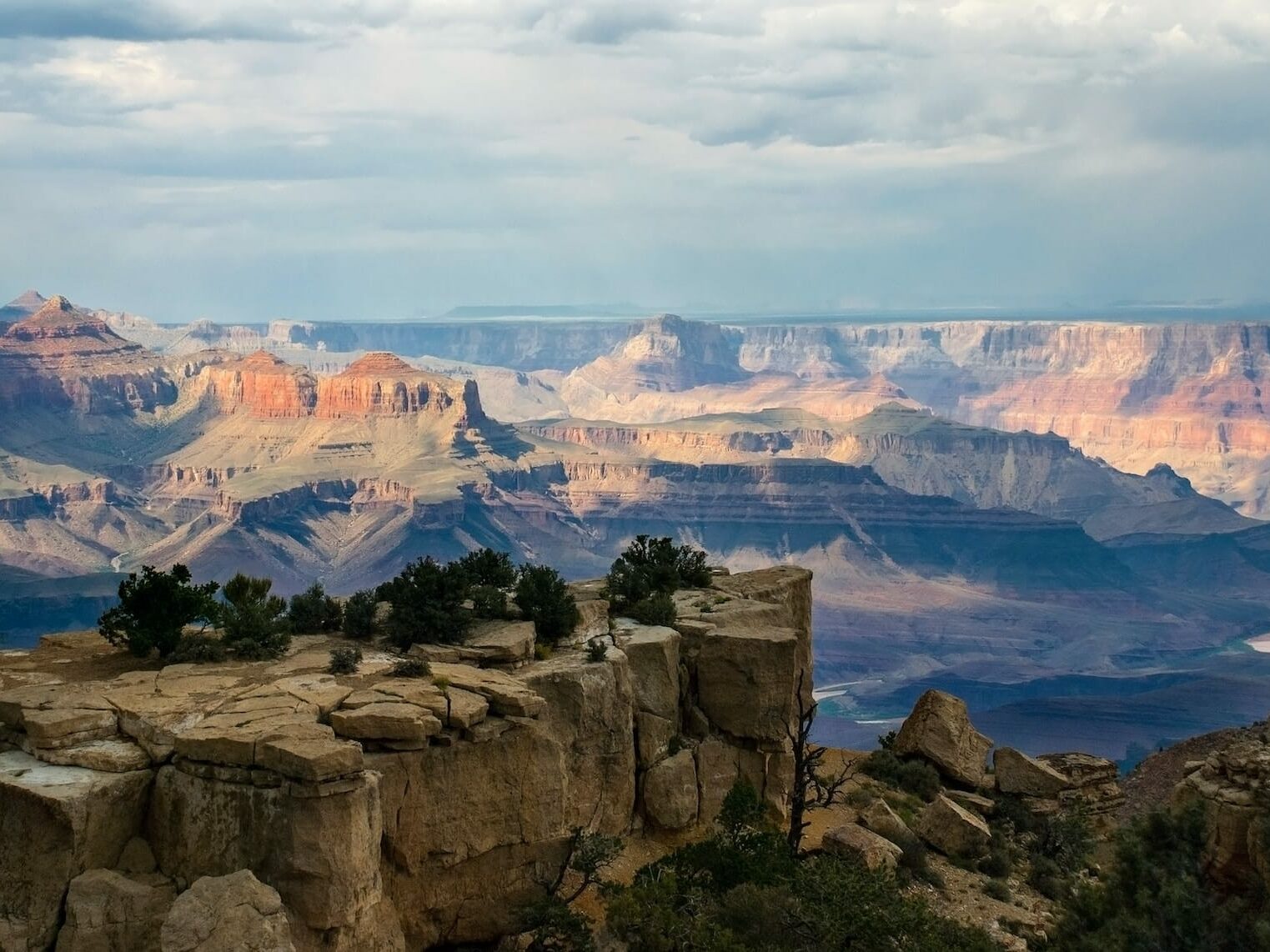
When it comes to beauty, Arizona’s national parks are in a league of their own. But if you had to pick the most beautiful park in Arizona, the Grand Canyon National Park would probably top the list. Famous the world over for its size, scope and grandeur, the park boasts some of the most spectacular scenery on earth.
Grand Canyon National Park covers a vast area of northwest Arizona and attracts millions of visitors each year. The Grand Canyon, the park’s main attraction, is a mile-deep gorge. Carved by the Colorado River, it reveals millions of years of geological history through its layered bands of red rock. The breathtaking views from the park’s many overlooks provide a visual feast that is hard to beat.
Whether you’re standing on the rim, taking a mule ride into the canyon or exploring its depths on a rafting trip, the Grand Canyon offers an unparalleled experience of nature’s grandeur. Its combination of incredible depth, vibrant colours and ever-changing light make it a sight to behold and a place that truly embodies the natural beauty of Arizona.
The three biggest national parks in Arizona
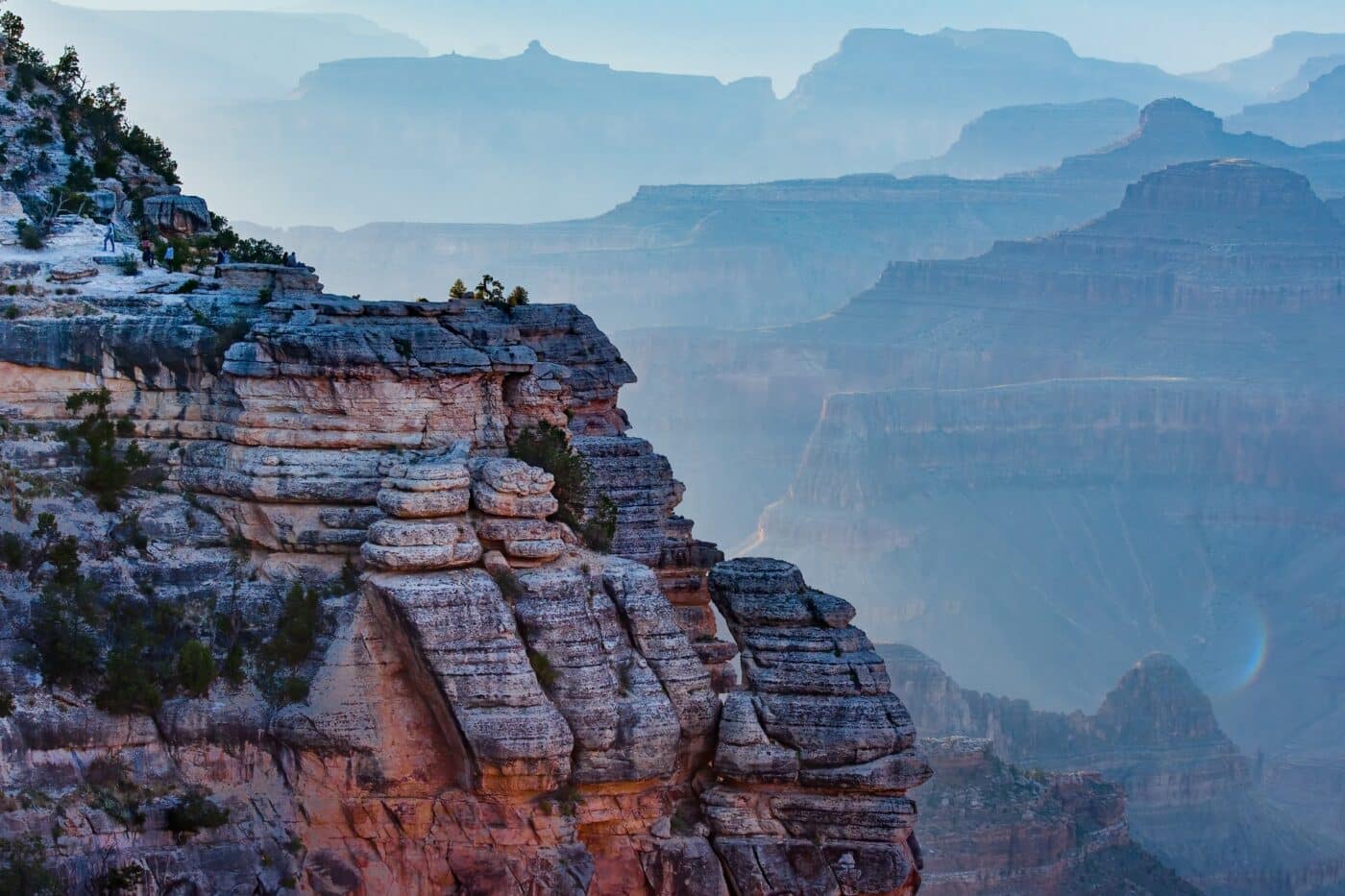
Known for its diverse landscapes and spectacular natural beauty, Arizona is home to several national parks. The three largest by area are Grand Canyon National Park, Petrified Forest National Park and Saguaro National Park.
- Grand Canyon National Park: This iconic park, spanning more than 1.2 million acres, is globally renowned for its vast size and stunning views. The Grand Canyon itself is a geological marvel, with its layered bands of colourful rock revealing millions of years of Earth’s history.
- Petrified Forest National Park: The park covers 230 square miles and is known for its large deposits of petrified wood. The park also features the colourful badlands of the Painted Desert, historic structures, archaeological sites and displays of fossils dating back 225 million years.
- Saguaro National Park: Named after the giant saguaro cactus native to its desert environment, this park is divided into two sections, east and west of Tucson. Covering a total of 91,716 acres, the park is home to the nation’s largest cacti and a symbol of the American West.
These parks, each unique, offer a variety of experiences for nature lovers, adventurers and history buffs alike. Whether it’s exploring the depths of the Grand Canyon, walking among ancient petrified trees or marvelling at the towering saguaro cacti, Arizona’s largest national parks promise an unforgettable experience.
Conclusion: National Parks in Arizona
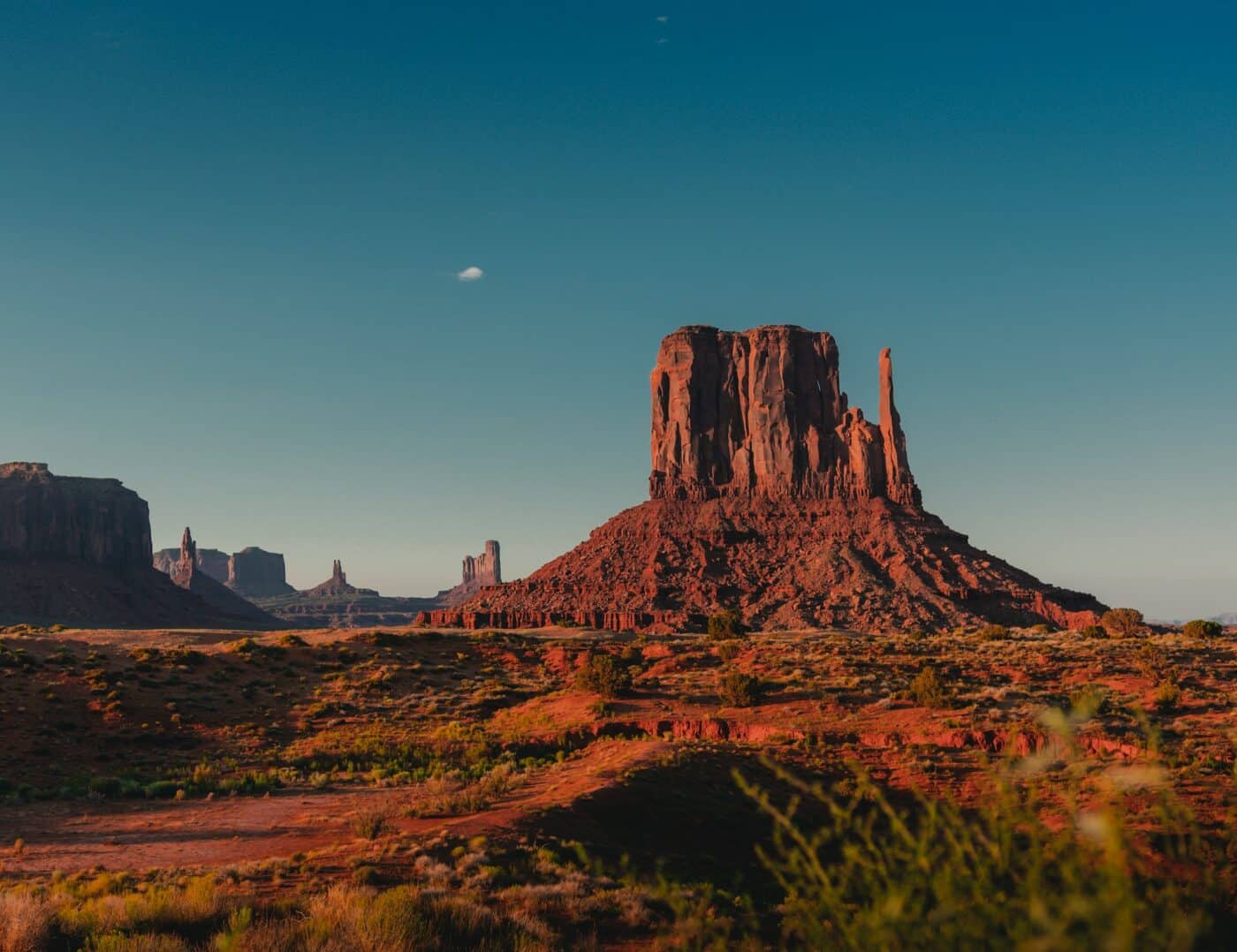
In summary, Arizona’s national parks and monuments offer visitors a wide variety of experiences. From the towering saguaros of Saguaro National Park to the ancient pueblos of Wupatki National Monument, each park offers a unique glimpse into the state’s natural and cultural history.
Whether you want to hike through the rugged landscapes of Petrified Forest National Park, explore the ancient cliff dwellings of Montezuma Castle National Monument or marvel at the natural beauty of the Grand Canyon, you’re sure to find an adventure to suit your interests. So why wait? Start planning your Arizona National Parks adventure today!
Article: Discover the Wonders of National Parks in Arizona”! Looking for more articles about the United States? Visit our section about the United States of America!
Or Looking for a comparison: The National Park in Kansas?
- 10 Best Places to Visit in Toronto - October 21, 2024
- Sustainable Tourism in Africa: Embracing Green Industrialization - August 22, 2024
- National Parks in Montana: A Traveler’s Paradise - August 20, 2024
